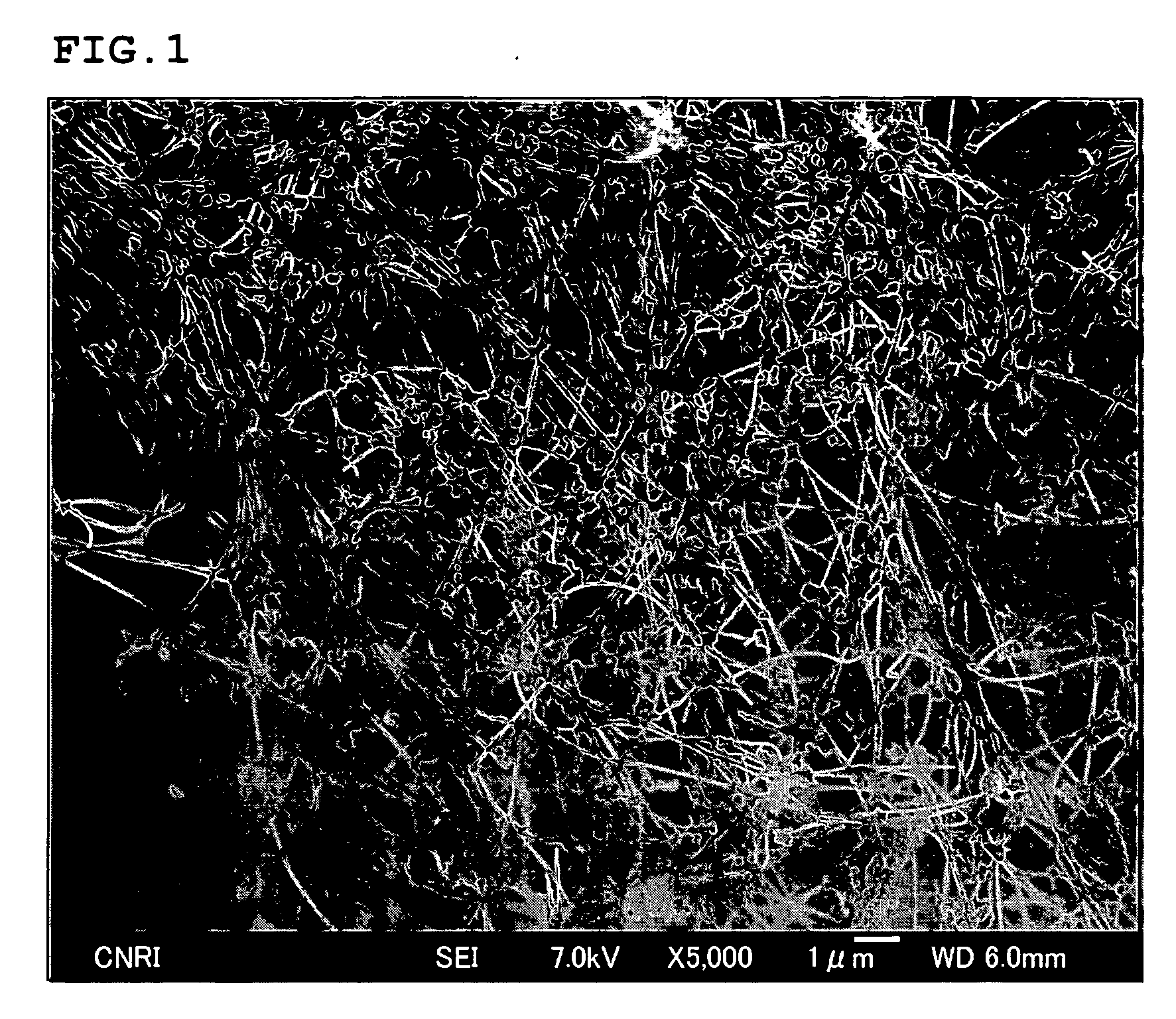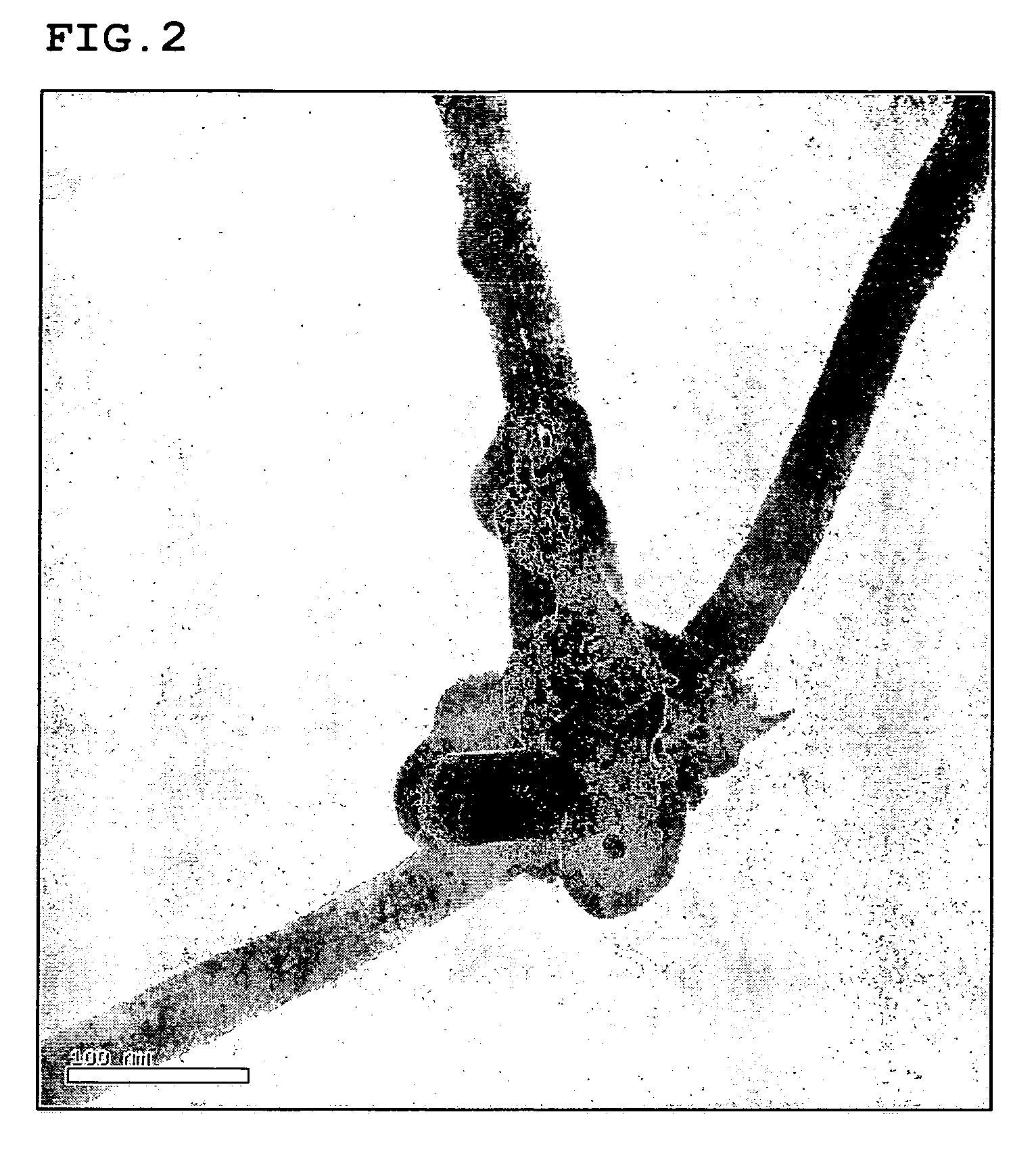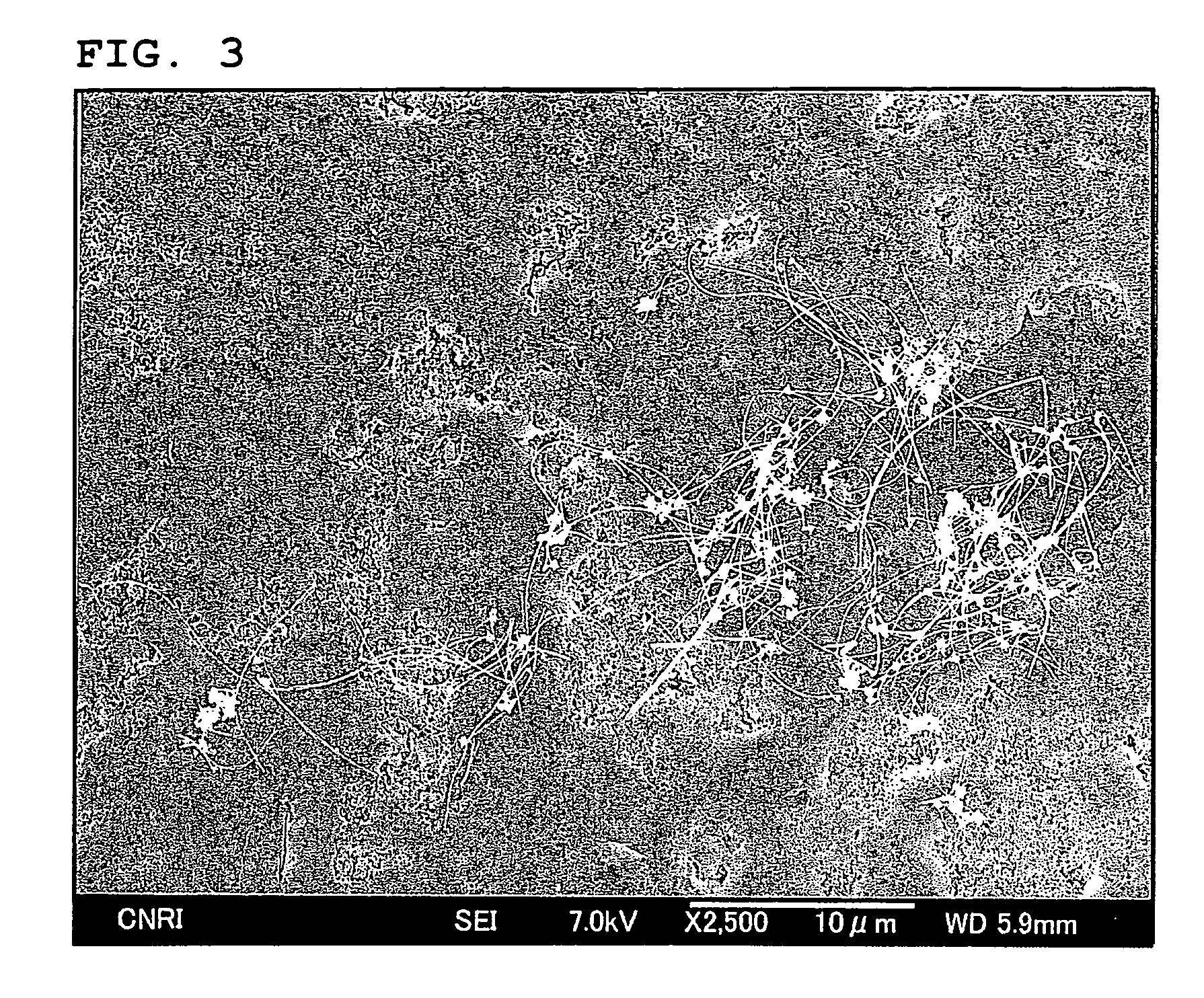Composite material
a composite material and composite material technology, applied in the field of new composite materials, can solve the problems of increasing affecting peripheral equipment, malfunction of devices, and material types, and achieve the effect of improving physical properties
- Summary
- Abstract
- Description
- Claims
- Application Information
AI Technical Summary
Benefits of technology
Problems solved by technology
Method used
Image
Examples
synthetic example 1
[0102] By the CVD process, carbon fibrous structures were synthesized using toluene as a raw material.
[0103] The synthesis was carried out in the presence of a mixture of ferrocene and thiophene as the catalyst, and under the reducing atmosphere of hydrogen gas. Toluene and the catalyst were heated to 380° C. along with the hydrogen gas, and then they were supplied to the generation furnace, and underwent thermal decomposition at 1250° C. in order to obtain the carbon fibrous structures (first intermediate). The synthesized first intermediate was baked at 900° C. in nitrogen gas in order to remove hydrocarbons such as tar to obtain a second intermediate. The R value of the second intermediate measured by the Raman spectroscopic analysis was found to be 0.98. Sample for electron microscopes was prepared by dispersing the first intermediate into toluene. FIGS. 1 and 2 show SEM photo and TEM photo of the sample, respectively.
[0104] Further, the second intermediate underwent a high te...
examples 1-7
[0110] Epoxy type adhesive compositions were prepared according to the formulations shown in Table 3, by blending the carbon fibrous structures obtained in Synthetic Example 1 with an epoxy resin (ADEKA RESIN™, manufactured by Asahi Denka Co., Ltd.) and a hardener (ADEKA HARDENER™, manufactured by Asahi Denka Co., Ltd.), and then kneading them with a rotation-revolution type centrifugal mixer (Awatori-NERITARO, manufactured by Thinky Co., Ltd.) for ten minutes.
[0111] Each epoxy type adhesive compositions thus obtained were applied on a glass plate using an applicator having a coating width of 100 mm and gap of 200 μm. The coated film was then hardened at 170° C. for 30 minutes to obtain a hardened film. The hardened film was then cut up into 50 mm×50 mm test pieces. Using the test pieces, volume resistivity and thermal conductivity were determined. The results obtained are shown in Table 3.
[0112] A similar epoxy resin composite film was prepared in a similar manner, except that th...
examples 8-13
[0116] Resin pellets were prepared according to the formulations shown in Table 5, by blending the carbon fibrous structures obtained in Synthetic Example 1 with a polycarbonate resin (Panlite® L-1225L, manufactured by Teijin Chemicals Ltd.) or a polyamide resin (Leona™ 1300S, manufactured by Asahi Kasei Corporation), followed by melt-kneading them with a twin screw vented extruder (TEM35, manufactured by Toshiba Machine Co., Ltd.).
[0117] The pellets thus obtained were dried at 120° C. for ten hours, and then used for injection molding under a prescribed condition to obtain test pieces. Using these test pieces, the volume resistivity and thermal conductivity were determined. The results obtained were shown in Table 5.
Controls 6-11
[0118] Resin pellets were prepared according to the formulations shown in Table 6, by blending carbon black (#3350B, manufactured by Mitsubishi Chemical) with a polycarbonate resin (Panlite® L-1225L, manufactured by Teijin Chemicals Ltd.) or a polyamide...
PUM
| Property | Measurement | Unit |
|---|---|---|
| diameter | aaaaa | aaaaa |
| mean diameter | aaaaa | aaaaa |
| diameter | aaaaa | aaaaa |
Abstract
Description
Claims
Application Information
 Login to View More
Login to View More - R&D
- Intellectual Property
- Life Sciences
- Materials
- Tech Scout
- Unparalleled Data Quality
- Higher Quality Content
- 60% Fewer Hallucinations
Browse by: Latest US Patents, China's latest patents, Technical Efficacy Thesaurus, Application Domain, Technology Topic, Popular Technical Reports.
© 2025 PatSnap. All rights reserved.Legal|Privacy policy|Modern Slavery Act Transparency Statement|Sitemap|About US| Contact US: help@patsnap.com



